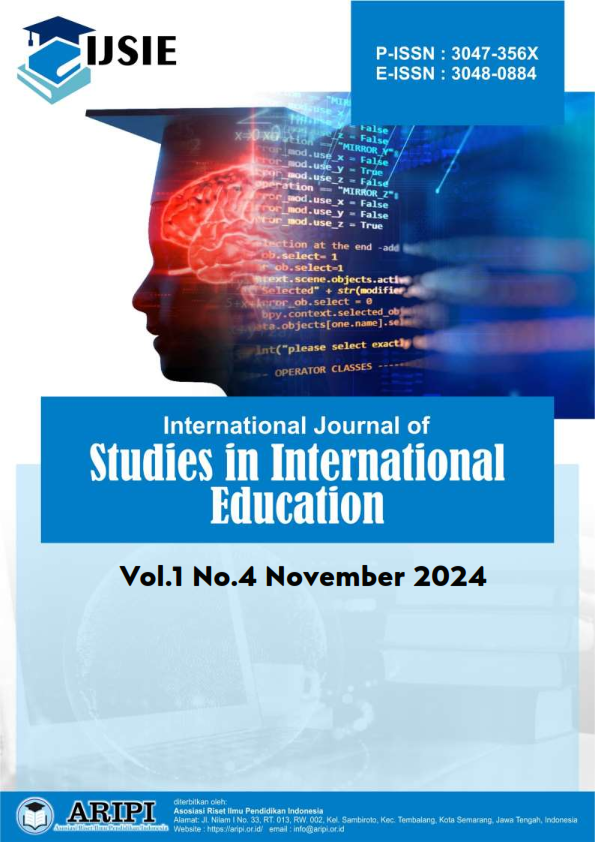Theoretical Research on Foreign Language Learning Anxiety Among English Major Students
DOI:
https://doi.org/10.62951/ijsie.v1i4.114Keywords:
Foreign language learning anxiety, English major students, Educational intervention, Affective Filter Hypothesis, Learning effectivenessAbstract
Foreign language learning anxiety is a prevalent emotional phenomenon among English major students that significantly impacts their learning effectiveness and motivation. This study comprehensively examines the definition, classification, causes, and complex effects of foreign language learning anxiety from a theoretical perspective. Through analyzing the interplay of personal factors (such as self-esteem, learning styles, learning motivation) and environmental factors (such as teaching methods, classroom atmosphere, test pressure, cultural differences), it reveals the multidimensional nature of foreign language learning anxiety. The research indicates that this anxiety not only reduces learners' motivation and efficiency but also interferes with their cognitive processes, affects the development of speaking and listening skills, and even negatively impacts their physical and mental health. To address this issue, based on the Affective Filter Hypothesis, Humanistic Psychology, Constructivist Learning Theory, and Social Interaction Theory, this study proposes educational intervention strategies, including optimizing curriculum design, improving teaching evaluation systems, establishing psychological counseling mechanisms, and strengthening the emotional support function of teachers. These strategies aim to create a positive, interactive learning environment to help students overcome anxiety and enhance learning outcomes.References
Cai, L. W. (2006). Foreign Language Learning Anxiety and Its Countermeasures. Journal of Hubei Education Institute, CNKI:SUN:PXYJ.0.2006-12-030.
Chen, J. (2003). The Influence of Foreign Language Teachers' Classroom Behavior on Students' Learning Anxiety. Journal of Chengdu University (Social Sciences Edition), https://doi.org/10.3969/j.issn.1004-342X.2003.03.030.
Ding, Y. (2008). One of the Emotional Factors Affecting Adult English Learning: Foreign Language Learning Anxiety. https://doi.org/10.3969/j.issn.1672-8181.2008.09.004.
Gu, J. Z. (2010). Causes and Countermeasures of Foreign Language Learning Anxiety. Science Consultation.
Huo, W. H. (2007). The Impact of Anxiety Psychology on Foreign Language Learning. Medical Education Exploration, 6(10), 932–933. https://doi.org/10.3760/cma.j.issn.2095-1485.2007.10.022.
Ji, L. X., & Zheng, B. (2009). Correlation Between Anxiety and Motivation in Foreign Language Learning. Wireless Music: Educational Frontier.
Li, Y. (2013). Research Progress and Implications of Foreign Language Learning Anxiety. Reading and Writing (Teachers' Edition): Quality Education Forum, https://doi.org/10.3969/j.issn.1002-7661.2013.01.008.
Liu, M. H. (2004). Research on Anxiety in Foreign Language Classrooms. Journal of Tsinghua University (Philosophy and Social Sciences).
Liu, X. X. (2009). Teaching Countermeasures under Foreign Language Learning Anxiety. Urban Family Education.
Ma, Z. X. (2013). Analysis of Factors Related to Foreign Language Learning Anxiety. Journal of Jixi University, CNKI:SUN:XBJX.0.2013-01-036.
Meng, X. P. (2007). Foreign Language Learning Anxiety and Teaching Strategies. Journal of Shanxi Youth Administrative Cadres College.
Wang, T. H. (2008). Implications of Research on Foreign Language Learning Anxiety for Foreign Language Teaching. Shaanxi Education (Higher Education).
Wu, W. H. (2010). The Impact of Anxiety on Foreign Language Learning and Countermeasures. Journal of Jiamusi Education Institute, CNKI:SUN:JMSJ.0.2010-04-227.
Downloads
Published
How to Cite
Issue
Section
License
Copyright (c) 2024 International Journal of Studies in International Education

This work is licensed under a Creative Commons Attribution-ShareAlike 4.0 International License.




